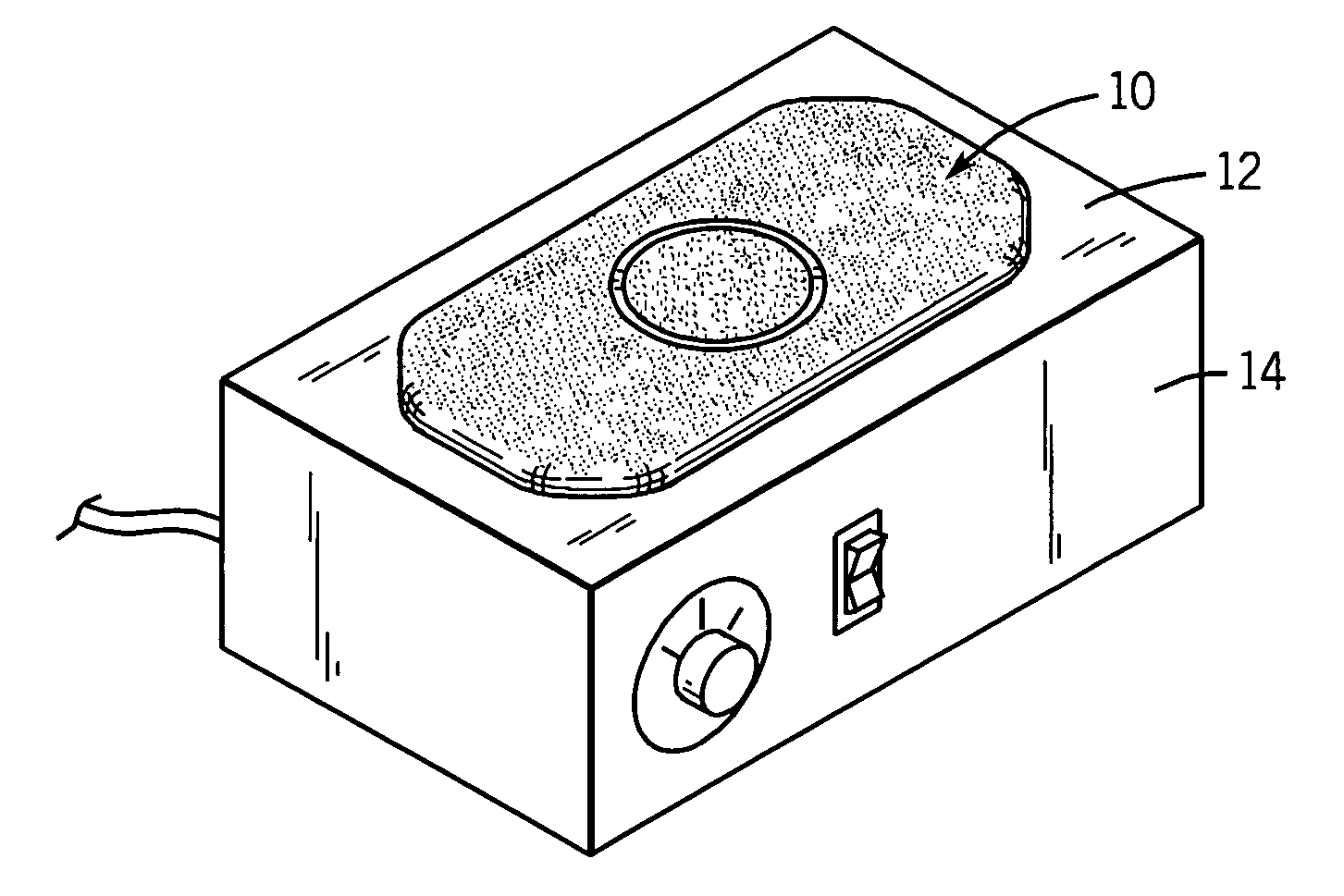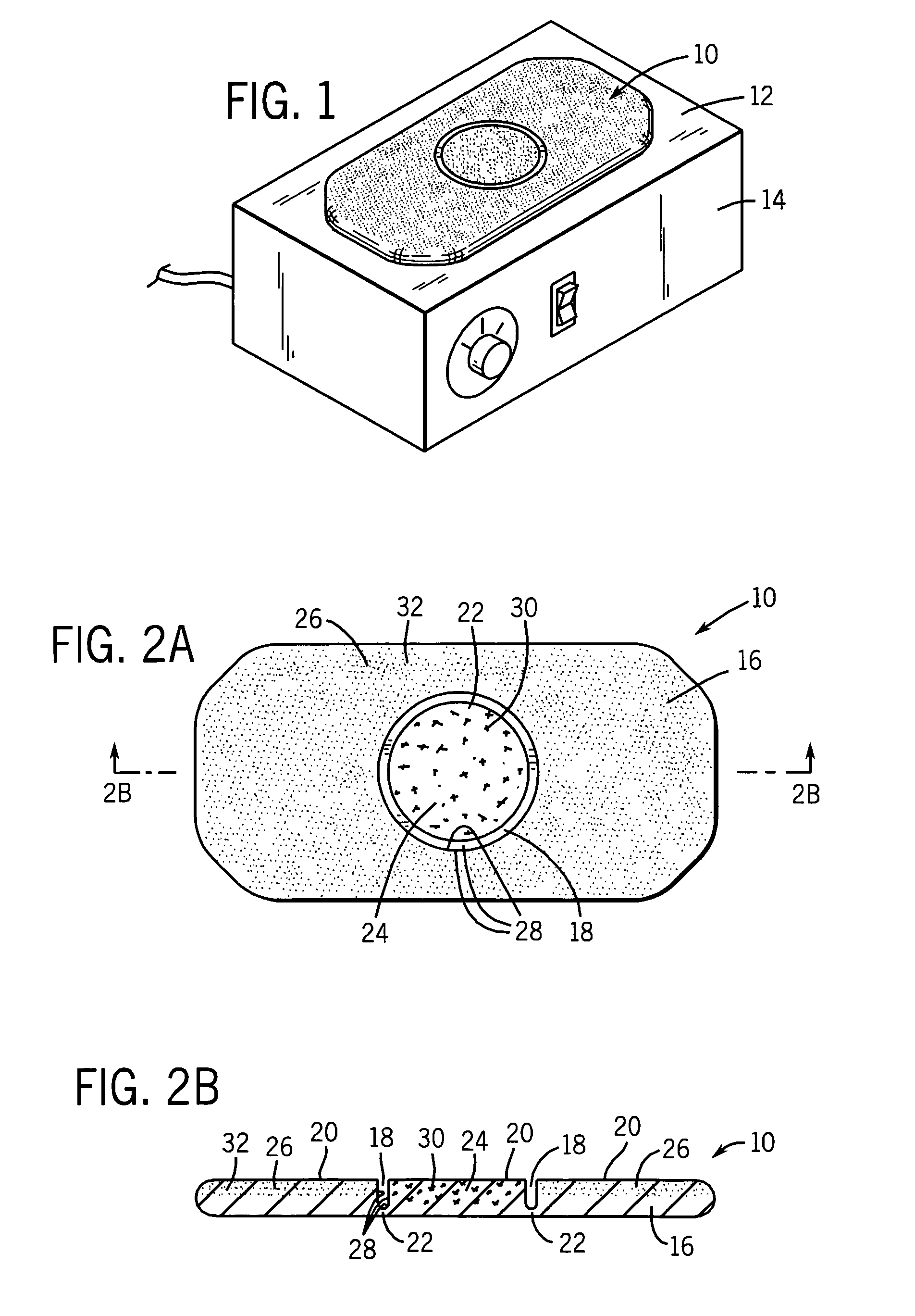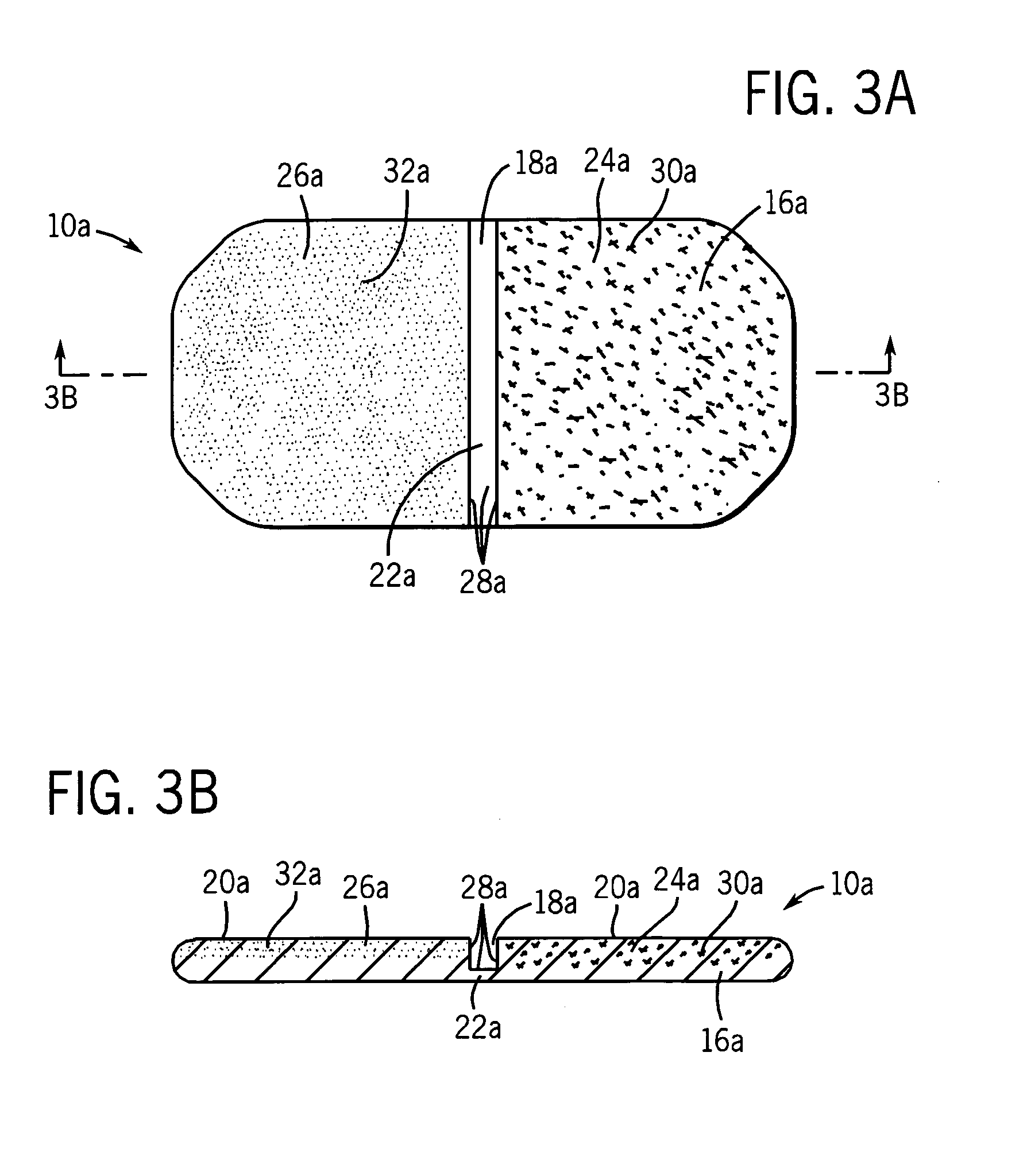Multi-stage dispensing mat
a multi-stage, mat technology, applied in the direction of lighting and heating equipment, tobacco, heating types, etc., can solve the problems of unnecessarily high levels of insecticide or other active being dispensed into the air, unnecessarily increasing the cost of such heaters, and reducing the service life of such heaters, so as to achieve the desired protection very quickly, reduce the effect of bleeding and reducing the cost of heating equipmen
- Summary
- Abstract
- Description
- Claims
- Application Information
AI Technical Summary
Benefits of technology
Problems solved by technology
Method used
Image
Examples
Embodiment Construction
[0032]Referring first to FIG. 1, a mat 10 is shown placed upon a horizontal burner face 12 of an electric heater 14. The heater 14 can be an electrical-resistance heater, such as the heater sold by as the RAID® heater by S. C. Johnson & Son, Inc. However, other heaters could also be used, including without limitation those with horizontal, vertical, or other orientation of their heating surfaces.
[0033]A first preferred embodiment of the mat is shown in other views in FIGS. 2A and 2B. Mat 10 includes a slab-like body 16 made of a porous material suitable for retaining volatile materials. Further, the porous slab material is sufficiently heat sensitive so as to melt when contacted by a hot forming die but also sufficiently heat resistant so as to not significantly melt in the presence of heat from heater 14. Slab-like body 16 has a circular moat 18 on upper surface 20 formed by pressing upper surface 20 with a hot forming die (see U.S. Pat. No. 3,075,862 for an example of using a hot ...
PUM
| Property | Measurement | Unit |
|---|---|---|
| temperature | aaaaa | aaaaa |
| temperature | aaaaa | aaaaa |
| operating temperature | aaaaa | aaaaa |
Abstract
Description
Claims
Application Information
 Login to View More
Login to View More - R&D
- Intellectual Property
- Life Sciences
- Materials
- Tech Scout
- Unparalleled Data Quality
- Higher Quality Content
- 60% Fewer Hallucinations
Browse by: Latest US Patents, China's latest patents, Technical Efficacy Thesaurus, Application Domain, Technology Topic, Popular Technical Reports.
© 2025 PatSnap. All rights reserved.Legal|Privacy policy|Modern Slavery Act Transparency Statement|Sitemap|About US| Contact US: help@patsnap.com



